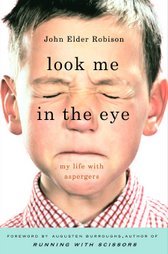We’re in Anne’s first-person point of view as the first scene opens. Anne is curious about the noise above her head, but then Helen and Jean arrive. Does the reader already know what the sign says? If not, it seems you should tell us here, since it’s the focus of their dialogue. The women hear the noise above them, and Anne tells the others she’d like to go check it out. Now, we’re in first person, so you can easily go inside of Anne’s head to let the reader in on what she thinks the noise might be. Jean’s chicken, and so Helen and Anne head up the stairs. Helen stops, changing her mind. The dialogue is working here as they go back and forth about whether they should keep going or not. The narrative works, too, as Helen opens the door and turns on the light. What’s missing for me is Anne’s internal dialogue. The advantage of the first person point of view is that we get to be up close and personal with the viewpoint character as she thinks about her goal in the scene, the obstacles that come at her to keep her from achieving it, her thoughts and feelings about the other characters. This is where much of the tension comes into a scene of dialogue—what the character’s thinking that she can’t say out loud.
In the second passage, we’re in Helen’s third-person point of view. I mean, you’ve headed up the scene with that, but as I start reading, there’s no way I would know that. How about entering Helen’s head, so that the reader can experience the action from inside of Helen? What’s important to her in this scene? When in a point of view, we’re inside. Helen can’t see her own face blushing, so instead of showing her face to the reader, reveal her thoughts about Anne’s question about the sign. What is she thinking when they hear the noise? The scene proceeds much as it did before. The only part that’s really different is a line or two inside of Helen’s head as she watches Anne go upstairs. She feels a tinge of guilt. This is the only time you go inside of her so that we can tell that this is her viewpoint. So I’d just like to suggest that whether you’re writing in first or third-person point of view, you make sure to penetrate the character’s head as this is how you reveal to the reader whose viewpoint we’re in. It’s how the character thinks and observes the situation and the other characters. It’s how he perceives himself. This is how the reader gets to know the character from the inside out.
Subscribe to:
Post Comments (Atom)










3 comments:
aw, thanks for sharing. internal dialogue and thoughts is a weakness for me, and i write in close third.
This really is so helpful.
A friend once read something of mine and was complimentary, but she said I had too much internal dialogue -- which is true. I can't stop thinking about what people are imagining; how they are judging their friends or feeling guilty or what they've forgotten to do at home and how that's niggling at them.
So I reckon you and I could do an exchange: I'll send you some of my writer garrulousness if you send me some of your bare bones approach! We'd definitely both profit from a little of what the other has...
These are interesting comments - it really makes me think about how I use words and fleshing things out better. I often over-rely on the outside and forget the internal dialogue. Thanks for sharing. It seems like such a great class.
Post a Comment